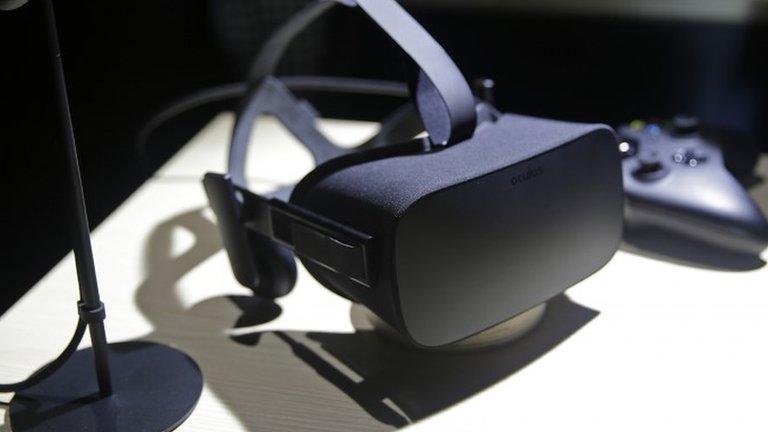CES 2016: Faraday Future shows off its concept car
- Published
WATCH: Faraday Future reveals its futuristic concept car
A car firm hoping to disrupt the auto industry has shown off its first concept vehicle at the CES tech show.
Faraday Future said its battery-powered FFZero1 would project information over the driver's view and include a smartphone dock in its steering wheel.
The firm highlighted, however, that the modular basis of its design meant it could easily reconfigure the elements to create other types of electric vehicles including pick-up trucks.
Some experts seemed sceptical.
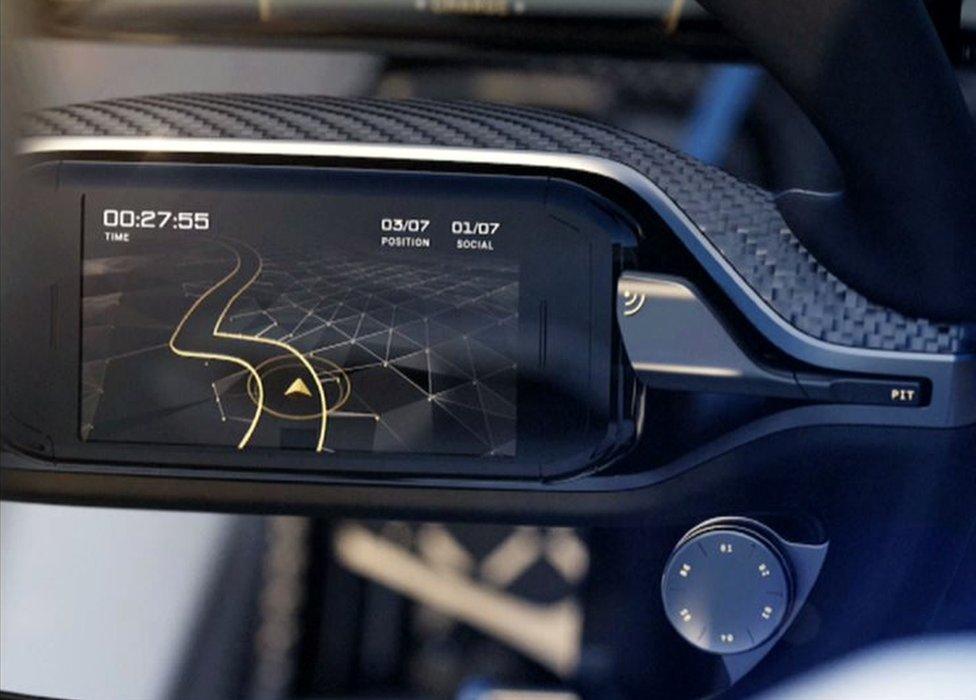
The steering wheel allows a smartphone to be plugged in so it can show useful information
But the company - which is backed by the Chinese internet TV provider LeTV - said it was on course to deliver its first production vehicle in two years' time.
Its research chief Nick Sampson - who was formerly an engineer at rival electric car-maker Tesla - suggested his firm was able to move faster than others thanks to its adoption of "variable production architecture".
He explained this meant it would use the same basic underlying structure on all its vehicles, adapting it to include anywhere from one to four motors, battery packs of various sizes, different types of wheelbases and other optional parts.
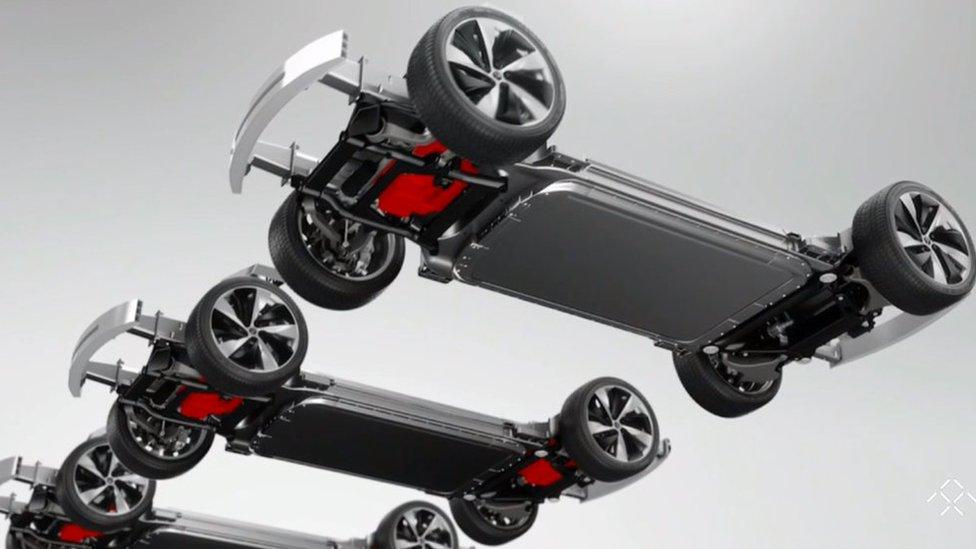
The firm says the underlying structure of the vehicle can accept different battery and motor configurations
This, he said, meant different models could be rolled out in a relatively short space of time - some perhaps prioritising range and others horsepower.
The company is on course to release its first production car in 2018, Mr Sampson added, and would break ground on its first factory, to be based near Las Vegas, within a few weeks.
Faraday Future has pledged to invest more than $1bn (£679m) in the plant and eventually employ more than 4,500 workers.
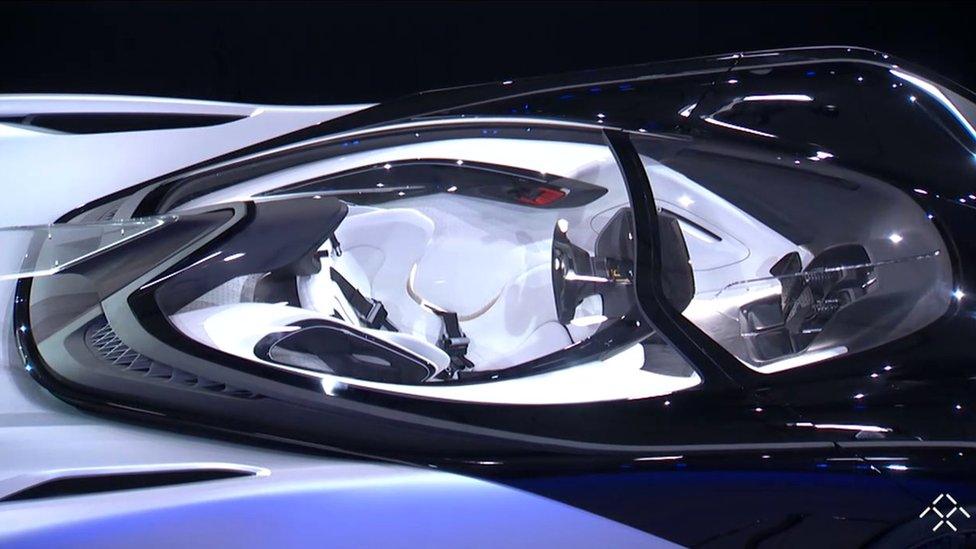
Despite the firm's ambition to be more eco-friendly than its rivals, there is only space for one person in the FFZero1
"The car's obviously very radical but that's what concepts are all about," commented Thilo Koslowski from the tech consultancy Gartner.
"I think Faraday has a good understanding of what it has to do in order to be successful. But we will have to see if it will be successful. I can tell you that the established vehicle manufacturers are not standing still either."
Scott Evans, associate editor at the Motor Trend news site, was more doubtful.
"Faraday Future claims to be disrupting the industry and completely rethinking the car, but is promising stuff everyone else is doing," he tweeted, external.
Aero tunnels
The internet-connected 1,000-horsepower FFZero1 incorporates several ambitious elements including:
The ability to top 200mph (321 kph) and accelerate from zero to 60mph in less than three seconds
A helmet that provides oxygen and water to the driver
"Aero tunnels" that channel air through the vehicle to reduce drag and cool the batteries
A multi-touch screen interface and augmented reality views projected onto the road ahead
How many of these are intended to make it to market was unclear.
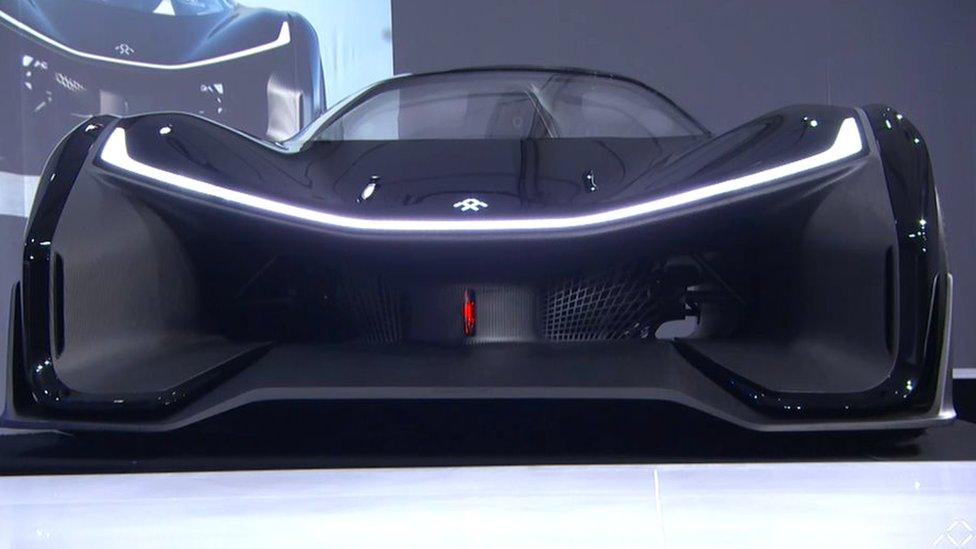
The firm said the use of "aero tunnels" would force air to pass through the car helping cool its batteries
But its chief designer, Richard Kim, said its edged side - which he described as a "UFO line" - would feature in all Faraday Future vehicles to mark them out.
In time, the firm said it intended to build self-drive vehicles and would not only sell its cars but also provide "connected mobility" to the wider population.
"Electric mobility has been hampered by a lack of charging stations so Faraday Future has invested in a car sharing company," explained Alexander Renz from the consultancy Clareo.
"It is serious about going beyond car ownership.
"And the partnership with LeTV, which is the Netflix of China, is about seeing the car as a platform. In the future when cars will be driverless, people will need something to do."
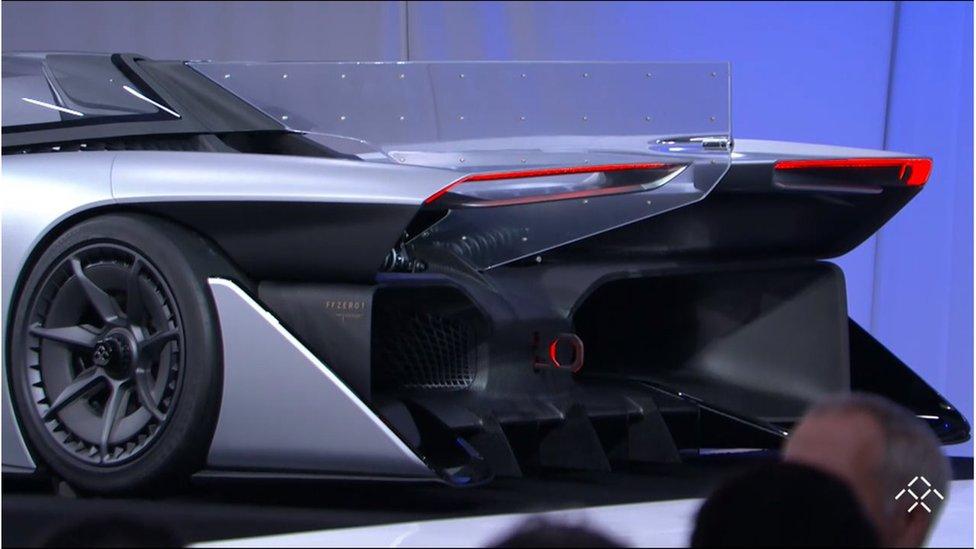
Faraday Future likened its vehicle to a "tablet on wheels"
The launch was slightly marred by several technical faults involving faulty teleprompters.
Potentially a bigger issue, however, was the Financial Times' spot, external that Faraday Future's chief battery architect had left after 15 months in the role. The company is only three months older than that.
Although Tesla is not attending CES, several other companies are expected to show off new electric concept vehicles of their own over the coming days including BMW, VW and Chevy.
Read more of our CES articles and follow the BBC team covering the show on Twitter, external.
- Published5 January 2016
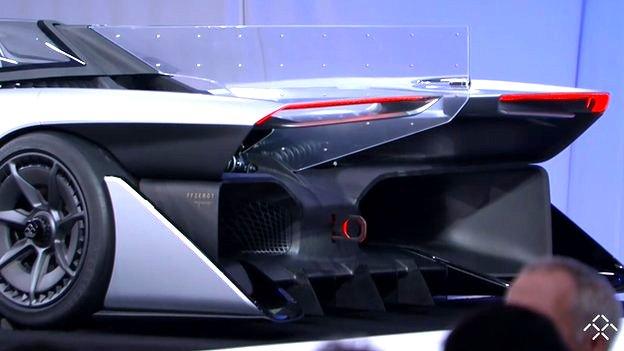
- Published5 January 2016
- Published5 January 2016
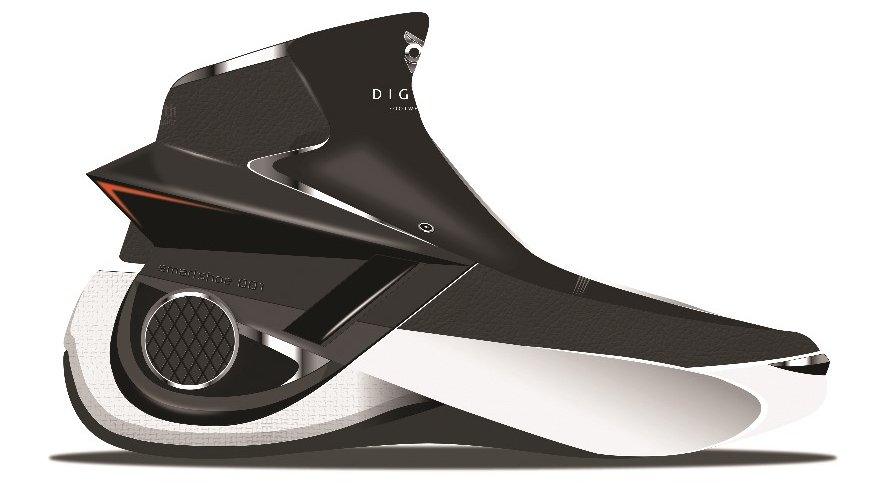
- Published4 January 2016
